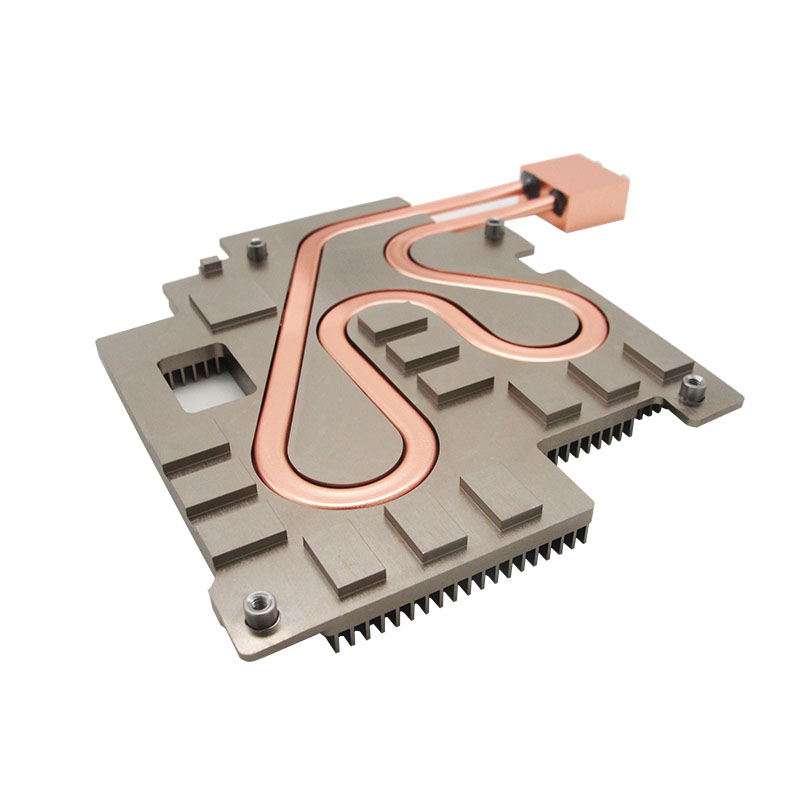Tel: +86-18025912990 | Email: wst01@winsharethermal.com
Blog


Views: 22 Author: Site Editor Publish Time: 2022-02-26 Origin: Site
The convective heat exchange always takes place with a cold plate. The cold plate looks like a plate that has different grooves at different orientations.
The plate is made of copper and aluminum material plus is mounted at a surface that is below the electronic device.

The coolant flows from the grooves at a specific flow rate. The cooling is finally done by exchanging heat from the lower surface of the circuit to the coolant, which raises the temperature of coolant. This plate is specifically mounted at the surface that is below the electronic circuit.
Usually coolant is made of water or mixture of water along with refrigerant and flows along the grooves at specific flow rate. The cooling is processed by exchanging heat from surface of the circuit to the coolant, thus, that there is increase in the temperature of coolant.
The importance of this heat transfer phenomenon consists low cost of implementation and with natural occurrence however, free convective flows are considered complex to control. Because they depend on different parameters like the thermo-physical properties of the fluid along with the geometry of the body shape.
Definition
Today, modern devices are becoming more and more compact, with the power density growing at the same time.
As a result, the requirements for contact cooling of critical heat sources are increasing considerably in many applications like…
● lasers,
● optoelectronics,
● power electronics,
● medical,
● drives,
● military
● or aerospace and many more.
Cold plates are considered very well deserved to achieve all these challenges – cold plates can be operated both as open cooling circuits (tap plus process water) and as closed cooling circuits that, for example, use recirculating chillers to deliver the waste heat to the ambient air.
Fluid Compatibility is Key
When you are in the process of selecting your cold plate technology, it is important that the wetted surfaces of the cold plate should be compatible with the coolant used.
Copper being a wetted path is well established and well suited for water and most common coolants. Aluminum, on the other hand, offers very good cooling performance in the combination with ethylene glycol and water solutions (EGW) and oils and other liquids.
But it is not suitable if you want to use untreated water. Cold plates with stainless steel wetted surfaces are the best for use with deionized water and other corrosive fluids.
Limited Flow Rate
In the application, the flow rate of the described cold plates cannot be increased high or too much, otherwise erosion can occur in the liquid channels owing to the excessive flow velocity of the cooling medium.
● Therefore, manufacturers usually condition a maximum flow rate in the guidance or specifications. For connecting the cold plate with the other cooling medium there are variety of connection options such as open tube ends (straight or beaded),
● screw-on fittings,
● click-on quick-release fittings
● and threaded holes in the cold plate body.
Alternative Terms: Radiating Plate; Liquid Cooling Plate; Liquid Cooled Dissipator
, Water Cooling Plate; Liquid to Plate Heat Exchanger;
The heat source distribution is multiplied and normalized to the value of any total heat and total current and it allows calibration for the maximum weld pool surface temperature. For the evaporation and ionization, only iron atoms are considered perfect while the shielding gas is considered as argon.
Materials
Typical cold plate materials are of two types like copper and aluminum, but for your concern silver plates are commercially available and more cautiously the eutectic alloy of copper and silver are being evaluated.
The following below mentioned are the thermal conductivity values that are used in the calculations:
● Aluminum: 220
● Copper: 388
● Silver: 418
● Silver/Copper (Cusil) Alloy: 515
It’s certain that some are asking why aluminum is used (also for air-cooled heat sinks) if its thermal conductivity is so much “worse” than, say, copper; and there are three answers:
● Cost
● Ease of Fabrication
● Technical Adequacy
For liquid cold plates, the choice of working fluid is as important as choosing the hardware pieces. The wrong liquid always lead to poor heat transfer, or clogging, and even system failure.
A proper heated transfer fluid should be provided compatibility with the systems metals,
● high thermal conductivity
● and specific heat,
● low viscosity,
● low freezing point,
● high flash point,
● low corrosivity,
● low toxicity,
● and thermal stability.
NOTES:
● Aluminum is rarely used in its original and pure form, hence the value shown is probably 15 to 20% overstated.
● Copper value is always for Alloy 11000.
● Silver value is always correct for fine silver.
● Silver/Copper alloy value is always for Cusil, a product of the Wesgo Metals. This alloy is mentioned in ASTM B628-98 Standard Specification of Silver and Copper Eutectic Electrical Contact Alloy as well.
Why Choose Us
We offer customizable products to meet your project necessities and meet different applications. We have expertise, resources, and products and provide latest thermal solutions for power electronics industries plus improve our valuable clients’ operations.
Our customers sometime get amazed with our products that we not only improve their concept design but also offer cost saving benefits and higher efficiency beyond their expectations. Be our client and get our versatile advantages.
Our custom cold plates are designed to revolutionize air-to-water and air-to-air heat exchangers, and we also offer higher heat conductivity for those applications that need high heat. To learn more, just call us at +86-13922909212 Or Email us at wst01@winsharethermal.com . Our sincere team is always available to solve your queries.